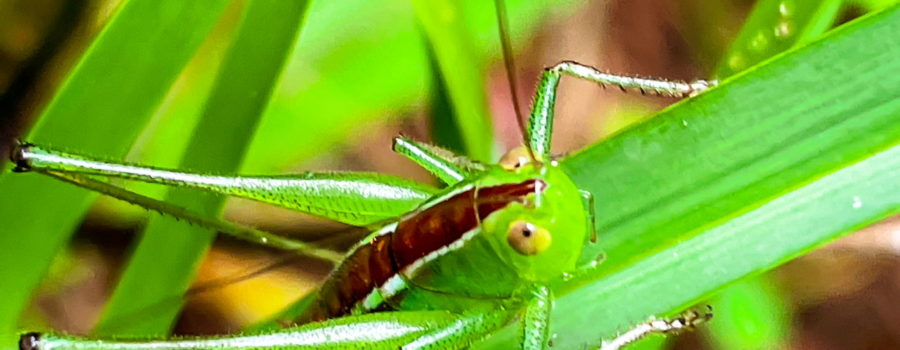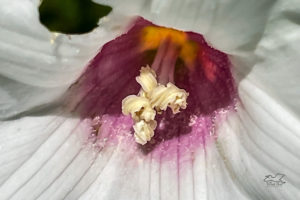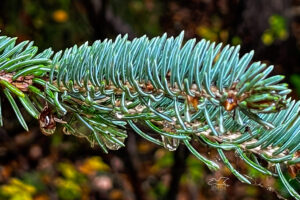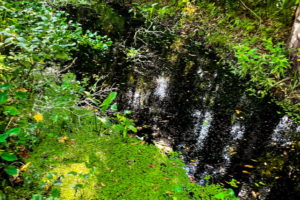The Slender Meadow Katydid is a Well Hidden Wildlife Gem

The end of August was a feast of insect photography opportunities due to the warm, humid weather and the abundance of wildflowers that attract many of these insects. I have already presented quite a few (but not all by any means) of the pollinators including, the long tailed skipper, the giant leopard moth, the five banded thynnid wasp, and several others. But not all the insects that are around at the end of summer are pollinators. One of the prettiest but most difficult to find is the slender meadow katydid (Conocephalus fasciatis). It’s not that this beautiful little insect is uncommon. In fact, it’s pretty common throughout the continental United States and southern Canada, but it is very well camouflaged for it’s habitat. It lives in fields, meadows, pine flatwoods, pastures, roadsides, swamp edges, or any place else where long grasses grow.

I have spotted these guys in my patches of blackjack several times while I’ve been in there photographing butterflies, bees, and wasps. They are very difficult to see unless you scare them out of the grasses. I usually notice them while I’m walking around in the blackjack and I make them jump. Most of the time they don’t go far, so if you can follow them to where they land and then move towards them slowly they will allow some photos. During the day they tend to stay hidden in the grasses and weeds where they are difficult for predators, mainly birds, to see them. By staying still, they become almost invisible, so they tend to stay still when approached slowly. At night, after the birds have gone to nest, they climb to the tops of the grasses and graze on the seeds, which are their main food. They do also eat bits of the stems and leaves. Most of the time they are pretty harmless, but when they swarm, they can be devastating to certain crops.

Besides being well camouflaged these particular katydids also have a very soft, high pitched call that is difficult for many people to hear. That’s especially true if there are other katydids and crickets also singing in the area. The end of summer is the breeding season for these katydids and the males use their song to help attract females. After breeding, the female lays her eggs either in the soil at the base of the grasses she feeds on, or she chews holes in the stem and deposits the eggs in them. The eggs remain dormant until spring when they hatch out into nymphs. After laying her eggs, the female survives until the first frost, which usually kills her. In south Florida and other places that don’t freeze, these katydids can actually live several years. The nymphs look very similar to the adult katydids, but they are smaller and have no wings. They go through several molts as their size increases and they usually reach adulthood in June or July.

It’s easy to see how many of us are living around these pretty little insects, and never happen to see or hear them. I consider myself to be fortunate in finding them in the wild patches in my yard. It never ceases to amaze me what is out there under our noses that is so well adapted to where and how it lives that we never even notice them. It is truly an amazing world that we live in!
Do you enjoy beautiful nature photography and artwork? Do you enjoy learning new and interesting things about nature and animals? If you do, you will love this blog! Come see for yourself! It’s easy to subscribe and never miss an episode.





Recent Comments